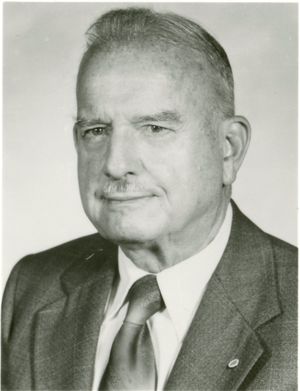Eugene C. Starr
Biography
Eugene Starr graduated from Oregon State University in 1923 and then taught electrical engineering there from 1927 to 1954. Thereafter, he was the chief engineer of the Bonneville Power Administration, a post he held until 1961, when he became a consultant for the same. For his excellent service at Benneville, Mr. Starr ws awarded the Department of the Interior’ highest medal, the Distinguished Service Award.
Mr. Starr was particularly known for his contributions to high voltage transmission science and the development of a series and shunt capacitor application and tests, generator characteristics, circuit breaker advances and high voltage transformer and cable problems. He was deeply interested in the possibilities of nuclear fission, and therefore during WWII he served as a consultant of the National Defense Research Committee and was present at the Bikini Atoll atomic bomb tests. After the war, Starr was involved with converting this new nuclear knowledge to peacetime power generation and integrating such capacities with the Federal power system in the Pacific Northwest.
Mr. Starr was a fellow of the IEEE, which awarded him the Habirshaw Award in 1968 “for outstanding contributions to the development of more economical and reliable a-c and d-c transmissions,” and the Lamme Gold Medal in 1980 for his lifetime contributions to the same field. He was also a member of CIGRE and the National Academy of Engineering.
Eugene C. Starr died on February 5, 1988 in Portland, Oregon.
